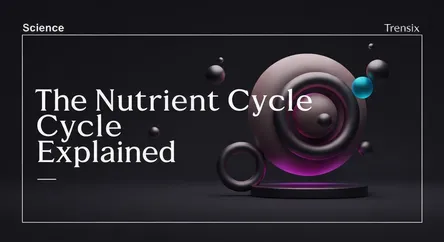Science
The Nutrient Cycle Explained

Discover how nutrient cycles, nature's essential recycling system, sustain life on Earth and why human activity is causing them to become imbalanced.
What is it?
A nutrient cycle, or biogeochemical cycle, is the movement of essential chemical elements between the living (biotic) and non-living (abiotic) parts of an ecosystem. It is nature’s recycling system for elements like carbon, nitrogen, and phosphorus, which are vital for all life. Nutrients are taken up from the soil, water, and atmosphere by organisms like plants. They are then passed along the food chain. When organisms die and decompose, microbes return the nutrients to the physical environment, making them available to be used again. This continuous pathway ensures that the building blocks of life are perpetually available.
Why is it trending?
The topic is trending due to growing concerns about environmental health. Human activities are significantly disrupting these delicate cycles. The burning of fossil fuels has altered the carbon cycle, contributing to climate change. In agriculture, the extensive use of nitrogen and phosphorus fertilizers has overloaded ecosystems, leading to pollution. This disruption leads to imbalances that harm the environment, such as soil depletion and the pollution of waterways, bringing the importance of these natural processes into sharp focus.
How does it affect people?
Healthy nutrient cycles are fundamental to human survival. They support food production by maintaining fertile soil, which is essential for agriculture. When cycles are disrupted, it can lead to severe consequences like reduced crop yields and food insecurity. Fertilizer runoff can contaminate rivers and lakes, causing harmful algal blooms that deplete oxygen, kill fish, and compromise drinking water sources. Ultimately, the stability of the ecosystems that provide us with clean air, water, and food depends directly on the balanced functioning of these essential cycles.